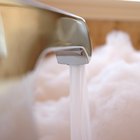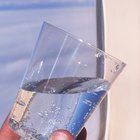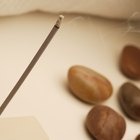At least since the time of Alexander the Great and the Ptolemaic dynasty, soaking in sea salt has been a purification and healing treatment. Proponents believe the natural minerals and iodized water leech impurities from the skin.
History
The first person to comment on seawater’s therapeutic merits was Hippocrates, the father of medicine. After observing the positive effect that the ocean had on a fisherman’s injured hands, he started encouraging his patients to use seawater to treat infections. Later a process known as thalassotherapy, Greek for “treat with the sea,” was developed in Brittany, France during the 19th century. Today, saltwater treatments are used medicinally in spas and wellness centers worldwide.
Effects
Seawater both sooths and sanitizes your body. Plus, it is similar to Epsom salts in that it contains magnesium, which helps to boost the immune system. In fact, according to Dr. Theresa Ramsey, co-founder of the Center for Natural Healing in Arizona, an Epsom salt bath stimulates a process called vasodilation, which increases white blood cell production and aids the body in fighting illnesses more efficiently.
Benefits
Saltwater will naturally disinfect your hot tub, and by using it instead of chlorine, you can eliminate your contact with harmful chemicals. This prevents you from experiencing the dry skin, red eyes, green hair and unpleasant odor associated with chlorine exposure. In addition, since sodium is a mineral, it will not evaporate. Thus, by using it in your hot tub, you may not have to drain the water as frequently or continually add chemicals, which should save you money.
Misconceptions
Because sodium chloride, NaCl, has a melting point just below 98 degrees, which is much lower than most hot tub temperatures, many manufacturers recommend using sodium bromine, NaBr, instead. In addition, the concentration of sodium in your tub will likely not be as high as that in the ocean. Whereas pure seawater contains several thousand parts per million, a typical sea salt hot tub will likely only consist of 1,500 to 2,100 parts per million.
Warning
Be sure to consult with your hot tub dealer before adding any type of salt into your hot tub. It could void your warranty. In addition, salt could adversely affect your system by clogging or corroding the pumps if your hot tub is not designed to handle salt. Some companies offer custom tubs specifically designed for optimum salt-water compatibility. Finally, be aware that a salt-water hot tub system may oxidize nearby metal deck furniture.
Easy Alternative
If you don’t own a hot tub and aren’t planning to purchase a new saltwater system, you can enjoy the soothing and therapeutic benefits of sea salt by blending it into your bath water. To enhance the experience, let the salt soak in an essential oil, such as peppermint, jasmine or lavender. Then, mix two parts salt with one part baking soda and add a dash of sesame oil. Kick back, relax and enjoy.
Related Articles

What Are the Benefits of Salt Water Hot ...

Epsom Salt for Bruises

Dangers of Salt Table Lamps

Saltwater for Acne

Vinegar for Eczema

How to Make Your Own Oxygenating ...

Epsom Salts & Ingrown Hairs

How to Get Rid of the Smell of Alcohol ...

Skin Problems Caused by Swimming Pool ...

How to Keep Bathwater Hot

How to Unclog a Perfume Sprayer

How to Keep Your Feet From Stinking in ...

Reverse Osmosis Purifier Vs. Ionization

Hot Stone Therapy for the Face

Benefits of a Sea Kelp Powder Bath

Why Does the Hair Fall Off of Your ...

Least Acidic & Safest Chemical Hair ...

How to Make Hot Towels

How to Make a Hot Toddy With Peppermint

Substitutions for Cooking With Hot ...
References
- NewsRx.com; Doctors' Advice: Treat Cold, Flu with Epsom Salt, Medical Letter on the CDC & FDA; December 2009
- “Natural Health”; Hot Springs in Your Home; March 2006
- “Global Cosmetic Industry”; The Salt of the Earth; Steve Herman; March 2007
- Repair-Home.com: Saltwater Hot Tubs
- Dr. Ramsey's Center for Natural Healing: Flu Treatments
Resources
Writer Bio
Based in San Diego, California, Jill Blessing has been writing since 1997. Her work has been published in "Triathlete" magazine, "CMYK" magazine, "Kansas City Homes & Gardens" magazine and "The Columbia Missourian." She holds a bachelor's degree in journalism from the University of Missouri.